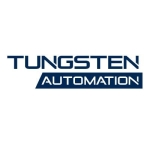What is our primary use case?
We've done a lot of automation with the product in the last two years. We started with accounts receivable processes in finance. I would say like AR function is one of the most mature functions in the product right now because we almost automated all the aspects of accounts receivable.
We have also started looking at automating the accounts payable process as well. I've only mentioned finance at this point, but we also have done a lot of automation with IT, as well as with procurement. Right now the penetration is higher with the support functions but we are also looking at different ways to automate. For example, we would like to use automation technology in core engineering. We also want to be expansive and do projects beyond our current boundaries — outside of just India. We've already done a small PoC (proof of concept) with a company in China and we also automated three small processes with a U.S. entity.
We use it daily and have done projects with the support functions, such as financial services, IT, and procurement support. We have 50 to 60 processes that have been automated using RPA in all three areas put together. This is the breadth and extent of what we have automated.
We are using the on-premise deployment model.
How has it helped my organization?
The product is improving our company in a number of different ways through the automation it helps us to create. I would say like the AR function is completely automated right now, but we are in the stages where we are looking beyond AR, beyond finance, and beyond support functions.
All this time that we were using the product in the beginning, we chose to work on individual processes for automation. We are working in small pockets. We were identifying a project or a process as a small chunk of automation and we looked at opportunities within that particular function or a process and automated it step-by-step.
For example, within the AR invoice process, there are different types of invoices that we do, like project invoices, manual invoices, past invoices, and other invoice variations. We had started building solutions for these things in isolation. We automated the SPA (Sales and Purchase Agreement) function first and then the project invoices. Then we saw an opportunity and made a change to bring all the invoices into the same platform. So now there is a bot which identifies what kind of invoice it is and it triggers a respective sub-rooting function what we have built-in. This is much more efficient. The AR function is something which we have automated end-to-end right now.
When bots start interacting successfully with each other, that is when we will see a true enterprise RPA (Robotic Process Automation) evolving out of using this solution. So we have benefitted a lot now, but expect that we will benefit even more in the future as we get better at using intelligence.
When we automate, we deliberately kept some manual toll gates. This was a very informed decision that we made. It's a conscious decision that we don't want to leave everything to the bot to do from start until the end because the accountability will not be there with any of the team members. This is one of the reasons why we have kept a manual toll gate in all our processes.
What is most valuable?
I would say the entire Automation Anywhere RPA functionality is the most valuable part of the product because it helps me to automate the mundane interpretative task. That is where most of my team members, who are part of the support team for product function, spend a lot of their time.
The IQ Bot is good. The pilot that we have done with one of our U.S. entities went well. Our accuracy has increased tremendously over the last two to three months. We have increased FTE efficiency. It's definitely a success for us.
You spend some time trying to automate using RPA and then once a solution is created, they will gain back the time that they spent in development and then have more time to think about how they can further improvise and improve the process. That is all possible with the RPA. That is what we have been doing successfully in the last two years. The opportunity to customize and build out the platform makes it more useful and valuable.
We found it very comfortable because we are all functional experts. Nobody had any programming experience earlier. We all were able to learn Automation Anywhere in a four day classroom session that we had with one of the trainers from Automation Anywhere. With that, we started our own development.
What needs improvement?
At least for our requirements, whatever version we have been using till now — I think the current version 11.3.2 — is fantastic and more than we could use as we grew with the product. Any additional functionality I'm going to get in the upcoming version is a bonus for us as users.
No product is perfect, so there is always some room for improvement. Right now we are most interested in cloud functionality. It could give us an additional option for managing everything in on-premises or in the cloud.
My experience and knowledge with respect to our initial deployment of Automation Anywhere were very limited. Had we had more experience, we probably would not have used the Intel landscape. We would have used something more relevant to our process and function. This compatibility might be improved.
I would definitely say Citrix automation is one area we have continued to struggle with for the last two months. If that can be an improvement in design for the next release it would be welcome. I know that a Citrix plugin has been already introduced by Automation Anywhere. If that can be made seamlessly integrated and easy to use, then I would definitely be very, very happy with that as an enhancement. The Citrix automation plugin that they have come out with until now has not been working for us. We are still in the process of figuring out how we can make that work. So, we are collaborating with the technical team from AA. There is an alternate solution where you can just move the system or application out of the Citrix environment and made it a standalone system. That will work. We know the workaround, but we still haven't figured out a solution to making it work in a Citrix environment. Hopefully, they will figure a solution in a month's time.
Any customer would look for advantages and changes in pricing. I won't say Automation Anywhere pricing is not good or not competitive. It is definitely competitive. But there are additional players in the market that they need to compete with and working on pricing could help. I believe there are competitors who do not charge anything for what is the AA Control Room (used for Bot creation). They charge only for the runners (Bot execution).
So there are other options available where you don't need to pay extra costs that may be more attractive depending on your usage. With Automation Anywhere I'm the creator as well as the Control Room. If Automation Anywhere could get a little more competitive on those aspects of pricing, I think it would be like heaven.
I would like them to combine a BPM solution with RPA. Sometimes you need to have BPM in place so your process orchestration will be smooth. It'll go through a standard process. On top of that, you are doing some manual activities that will be replaced with RPA. Automation Anywhere already has RPA, if they would allow us to create a simple BPM solution on top of it to use RPA that is the best resolution. It would solve most of my problems in my processing unit.
For how long have I used the solution?
I have been using the solution for about 18 to 19 months.
What do I think about the stability of the solution?
I would rate the stability of the RPA as much higher than the stability of an individual manually handling processes. Because stability is pretty good, the machine will outperform an individual. With respect to individuals, there will be always some attrition — there will be some learning time and people will tend to do mistakes. That is not the case with respect to the RPA. So while that is not directly about the product, it does add stability to our processing.
Beyond that, whenever there is any change to your applications or environment where you have automated a function, that is when your processes or RPA can stop functioning. So it requires a little bit of customization, and again you upload it into the control group. Because the RPA is so flexible and so convenient to work with and easy to use, I don't think that is where the major bottleneck occurs at these junctures.
Beyond that, we developed a fallback plan. We test the fallback plan once a quarter by stopping all the bots in operations and then we invoke the fallback plan. We have this mapped out in a document where we ask the respective processors to do the processes and simulate a stability failure.
There will be always risk associated with anything that you do. It's all up to an individual to make plans as to how they deal with bottlenecks, how to structure plans for potential stability issues, how they mitigate these potential issues by having a proper solution and proper process in place. To me, that is where the secret of stability really lies. It is not really correct to blame the stability of the product when it is the fault of the process. It's all up to an individual better manage how to look at things.
What do I think about the scalability of the solution?
I would say that scalability is a critical aspect of using RPA and maximizing efficiency. When you develop one bot. You can just use it for N number of ports with the same source code. So it doesn't require any retooling. Scalability is very high. There will be some process deviations or some nonstandard aspects associated with any process that may require rethinking and interaction.
For example, maybe because of the ERP (Enterprise Resource Planning) or the different systems that we use or integrate at the time of taking over those processes, scaling may be influenced. The classic example for our company, I would say, is that we have grown manyfold by acquiring lots of companies in the last three decades.
Every time we acquired new divisions or companies, it is not only about the revenue or products. We also get legacy systems or along with those entities, there will be some processes and practices which are nonstandard for our organization. We'll need to incorporate these different systems in the ERP.
But scalability is always possible. With the RPA only those areas where there are differences need to be fine-tuned in your RP source code. Then you can redeploy it successfully. Beyond that, we also take this as an opportunity to evaluate processes because we don't look at the RPA project as an isolated project. It is an opportunity to grow and improve automation in various ways and not just this one project alone.
Even before we automate something, we look at processes to scrutinize what are the nonstandard activities we do. We look to see if there are ways we can make the process more lean, simple and straightforward. This can actually make the process that I'm trying to automate more efficient. Then it is also easier to accomplish the development, easier to integrate with other processes, and more adaptable when you automate the process. Working this way, I know for sure that what I am automating is going to be an efficient process.
So scalability is very easy and very simple to achieve especially compared training individuals in a process. A bot needs no training. Making tweakings to the source code and deploying successfully in production is much faster and easier. Because of these reasons, I would say scalability is pretty efficient and easy to achieve using RPA.
We plan to increase usage in the future both in our current departments and new divisions of the business.
How are customer service and technical support?
I would rate Automation Anywhere as one of the best in the world when it comes to customer service. I've had the opportunity to gain specific experience with certain members of their team and the service is consistent and excellent.
Initially, when we started with the IQ Bot project, we had some issues and experienced a bit of a learning curve. So we immediately raised those concerns. Our first issue took less than 24 hours to get fixed, and without adding any additional cost to the customer. That type of service and support of a product is an important thing.
I would say the customer service team, the project team, and even the aftermarket customer success manager are all fantastic guys. I know that the organization has people with strong capabilities and excellent talent. It is very, very evident when you interact with them.
I would definitely say Automation Anywhere is aggressive when it comes to driving success for the customers. They are very passionate about customer success and their focus on the customer.
Some of my team members have taken courses with Automation Anywhere. They still need to complete a few more assessments before they get their certifications. The courses are pretty good, the assessment is very cumbersome and complex (from what I understand). It's too technical for them. Maybe it is easy for technical guys, but not for functional people. I assume that this is the way it should be, because it's an assessment before you get a certification. It has to be tedious and cumbersome to crack it.
How was the initial setup?
The best person in our organization to speak to the complexity of the initial setup is an IT guy from my team. He was responsible for a series of calls to the tech support team and he was involved in a lot of discussion with the Automation Anywhere team initially. Obviously we had contact with technical support so it may not have been so easy to do the initial setup, but I think that is quite acceptable or understandable. Anything which is new will probably be something you need to spend extra time on during the initial phase-in of a new product.
Beyond that initial setup and normal learning curve, I haven't seen any problem with respect to adapting the RPA technology in our company. It has been pretty smooth. The technical support team was great in terms of supporting anything we experienced in the way of technical issues. The only issues we experienced after that have been some issues with respect to using a Citrix environment. We are finding it difficult to automate on Citrix efficiently.
We have been continuously on calls and meetings with the technical support team. They have been coming up with a lot of innovative ways as to how they can fix that problem with Citrix. Of course, we are still in the midst of finding a solution to the issues. But I know for sure with the support that I get from the support team that we will definitely have a solution in the near future.
What about the implementation team?
We did our own implementation with assistance directly from Automation Anywhere's technical support team.
There was a bit of a hand-holding in the beginning because Automation Anywhere developers came and developed a few bots for us. Beyond that, it is all on our own. We have been very independent. We hardly got support from the Automation Anywhere team after that. From our own experience, the tool is pretty easy to understand and start using.
The bot creation process has different processes depending on what we automate, e.g., accounts payable, IT, and procurement. These are miles apart. The complexity would differ based on the different applications that we trying to integrate using RPA.
We try to check the different applications involved for automation and whether they are compatible with Automation Anywhere. Then, we understand the process. We do a value stream mapping, e.g., what are the non-value-added activities that we are currently doing to make it lean, simple, and re-engineer the process. We identify the activities that can be automated using RPA, or any tool.
There'll be the extensive workshop conducted before we conclude what we want to automate, how we want to automate, and how long it is going to take to automate. We do an extensive study to determine:
- What'll be the return on investment?
- What type of a return that you'll get by automating the process?
We document it and prepare it as a business case. We send it to the sponsor for approval. Once it is been approved, then we will kick-start our development. Once the development is completed, there will be UAT and we will roll it out to go live.
There will be a burn-in period where we will be providing the support. It's like a normal SDLC. It's the same model. However, we analyze the process in detail and a BRD will be prepared, then we will start the development.
A simple process might take somewhere around four weeks from start until the end. Something which is very complex in nature might take up to 12 weeks. Anything which is very complex, we would like to break into small pieces, then automate it step-by-step. We don't try to take the entire thing and digest it. We would rather try to break it into small portions, then move on.
What was our ROI?
Calculating ROI for us is pretty simple. We identify efficiency at the beginning, then based on that we will just move the headcount out of the process. We try to compare with the cost spent versus the quote of the money that we have saved on the fully loaded employee cost. That's a simple comparison of what we do. This is a very crude way of calculating our return on investment because there are other benefits that are derived by doing an automation. Other benefits include:
- Improving the quality of the process.
- Eliminating some of the duplicate payments to save some dollars.
- Making timely payments to the vendor to have better negotiation skills with them.
These are some of the other overall business benefits that you can derive out of it, but they are too tedious to take into consideration when you're trying to do an archive. That's why we keep it very simple by comparing the labor cost saved versus the cost spent on the technology.
What's my experience with pricing, setup cost, and licensing?
They are already coming out with a community license, which is really good. That's something that I wish to have.
Which other solutions did I evaluate?
We had looked at a lot of prominent players in the market and examined the different options as well, like Blue Prism and UiPath. Automation Anywhere was the one company who was flexible in terms of offering a PoC. We find this very comfortable. They were very approachable and aggressive, in terms of getting things done. This helped us make a decision in favor of Automation Anywhere. Also, Blue Prism doesn't have the functionality with attended automation that we would like to have. We are looking for the flexibility and convenience that comes with attended automation where you can still run your show.
We ended up choosing Automation Anywhere based heavily on their highly-approachable team. We thought of doing a PoC and Automation Anywhere was the first vendor to volunteer and say they would do PoC for us. That was not the case with the other vendors. They were very reluctant for whatever reason.
In terms of product, almost all the products are good. The differences are insignificant from the product standpoint. What makes Automation Anywhere a little different from the other players in the market is their presence in India. They have a very strong presence in India. They've an excellence sales team, very approachable solutions team, and technical team.
They are very approachable. They come and help you out in terms of creating a PoC, which is not the case with the other companies. The other companies are not that aggressive. They normally don't show that level of interest in terms of getting things done with the customer. They all come and approach for new business, but when it comes to going the extra mile to making something happen, that is where they are lacking. That is the difference for our decision of going in favor of Automation Anywhere.
But we got a lot of support from the company and they have always been willing to go the extra mile in terms of supporting the customer and making solutions happen. So that really influenced our decision, and that is one of the reasons why we want to go with the Automation Anywhere compared to other players in the market.
What other advice do I have?
If I were to rate this product on a scale of one to ten where ten is the best, I would definitely rate them nine. It is not a ten because of what may be my ignorance of the entire Automation Anywhere platform. Probably I'm not aware or don't know the complete suite of assets. I'm not in a position to rate it a ten. To rate Automation Anywhere a ten means I should have complete knowledge of the product and I am sure there are things I have not yet explored.
As far as advice, the normal tendency — and the mistake often made by organizations — would be to commit at the time of vendor selection by volume of features. They pay too much attention and focus on the product landscape. They think about one solution that has got 200 different functionalities rather than one which has got 210 different functionalities as being inferior just based on a number. But in reality, the users may probably not even be using even 10% of what is available in the tool or the platform. So they tend to give more weight to the product landscape.
In our case, we made an effort to look at more than just features, but the qualities of the companies and vendors as well. For example, we learned about the leadership journey for each vendor, how long ago they started in this business, how much focus they put into coming up with the product development — the R&D. It is also important who the venture partners are and who the people are who are associated with the company and product.
We have done a lot of automation with our ERP systems. We also have some in-house applications which are on .NET that we have integrated with RPA. This should be the minimum expectation when you're signing for an RPA contract with any vendor. You would expect the RPA solution or tool to work seamlessly with any system. Automation Anywhere works well with no problems except for the Citrix environment. This is where we have had a bit of a challenge. Beyond that, we have never had issues with Automation Anywhere.
These details are relevant and important when you go to make a decision or when you take on a partner as an RPA solution provider. You are not just investing in a partnership for the next six months or a year. Probably some of the bots you are developing today you'll want to be using even after ten years. It's a long-term association what you're trying to make with an entity, the product, and with a company. So it's important that you go through all these checkpoints rigorously.
I've not used anything from the Bot Store.
Every technology has pros and cons with some limitations. There is no point in just harping on the limitations alone. You need to look at how you can make that technology work and solve your problems. This is where the human intelligence comes into the picture.
This technology is an enabler. It will solve most of my problems. It is up to individuals on how to make it work. That is where the trick of the trade lies. If you know how to work with RPA, you will not complain. I've seen many people complaining saying, "RPA doesn't work. It doesn't give you ROI." It's not the technology's problem. It's the people's problem. It's your mindset which is stopping you from getting automated and start using the technology.
Biggest lesson learnt: You'll understand existing processes in a different dimension. You'll understand your people problems with the process in a better manner. It should not be just be looked at as an opportunity to automate it. If you look at the overall process to revamp and re-engineer it, then you can make your process efficient by making it lean, simple, and straightforward. On top of that, when you try to automate it, the overall process efficiency should increase tremendously.
if you just look at RPA as a tool to automate everything, that is not a good approach. There are some things which can be automated efficiently using simple VBA Macros. Sometimes you might require a simple .NET solution to automate your end process, which is more efficient. You can make automation in the existing ERP, and that might work better. You have to look at different ways of automating things based on the process and complexity. You have to look at what is the ideal solution, then you have to pick and choose what you want to automate.
Don't look at RPA to solve all your problems. You need to use the right technology to automate, simplify, and minimize your problems.
Disclosure: My company does not have a business relationship with this vendor other than being a customer.


















